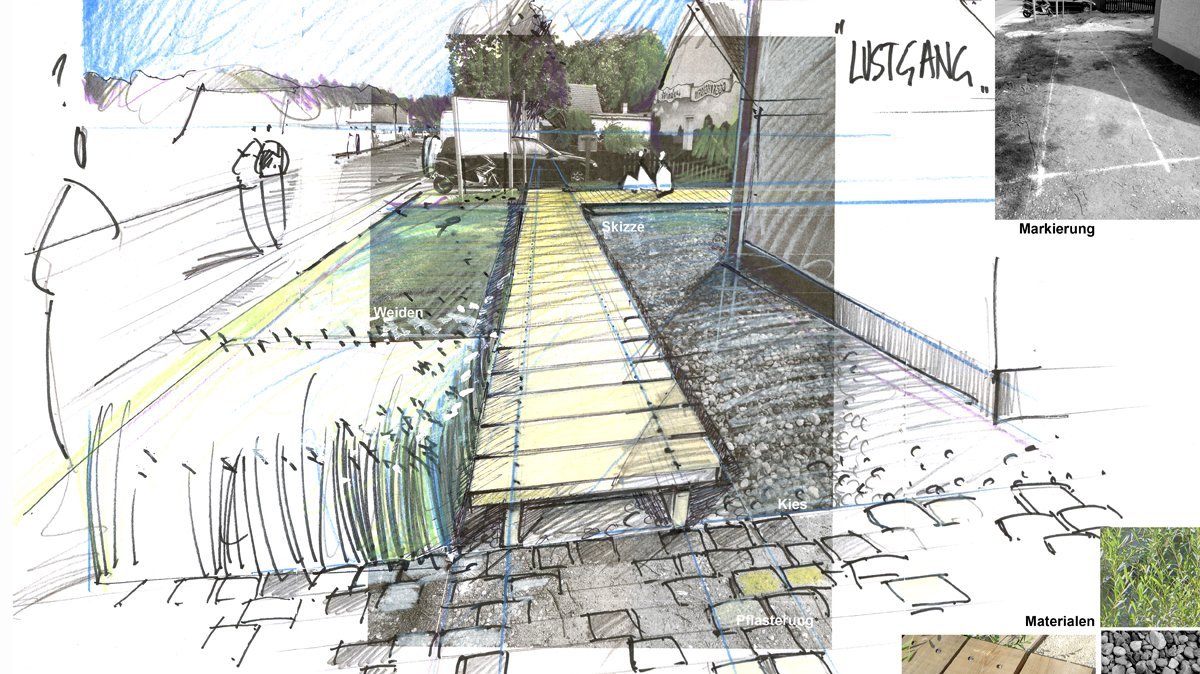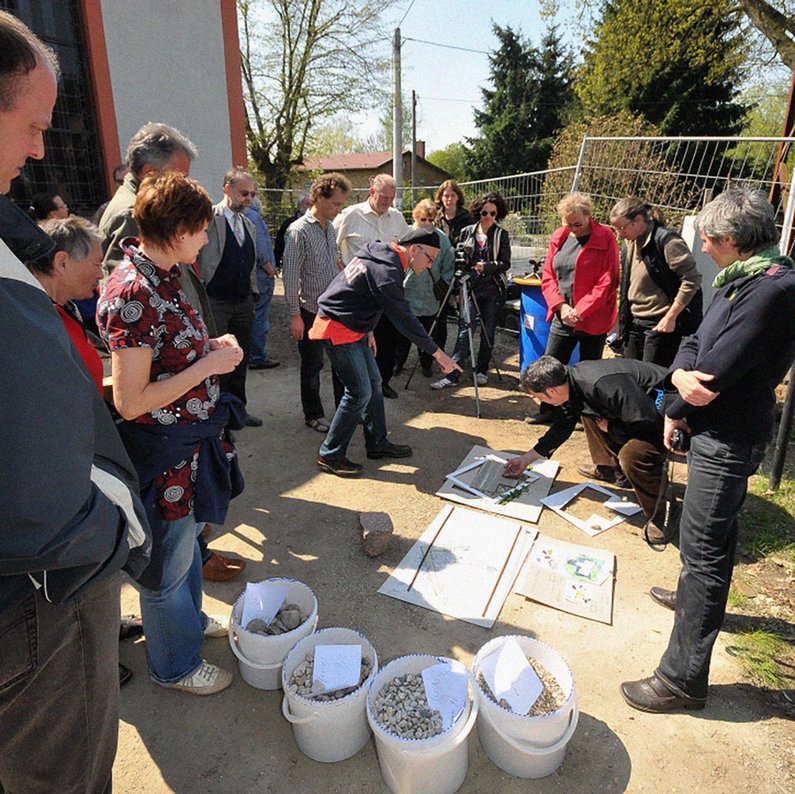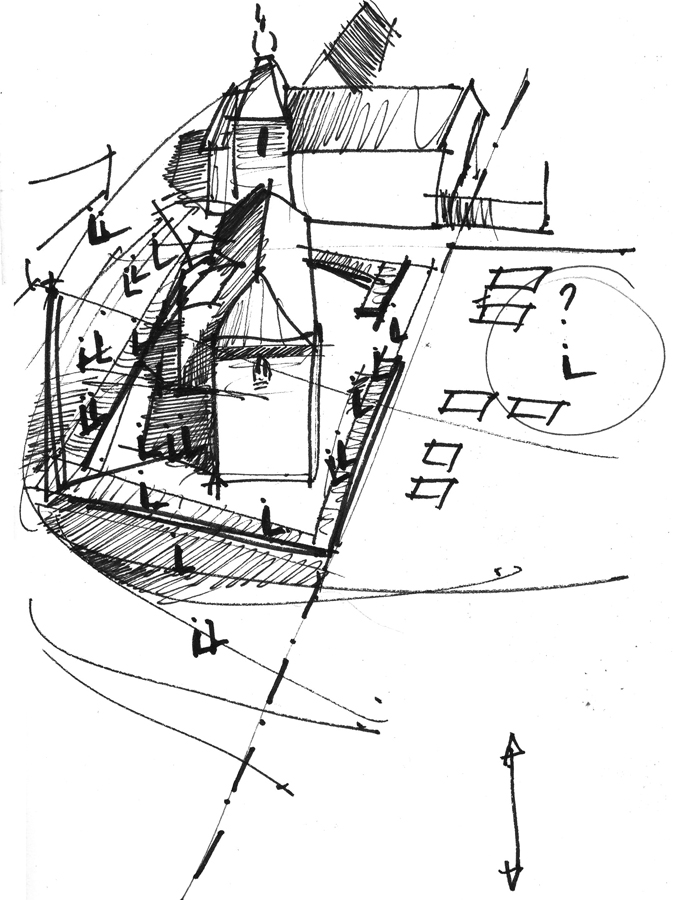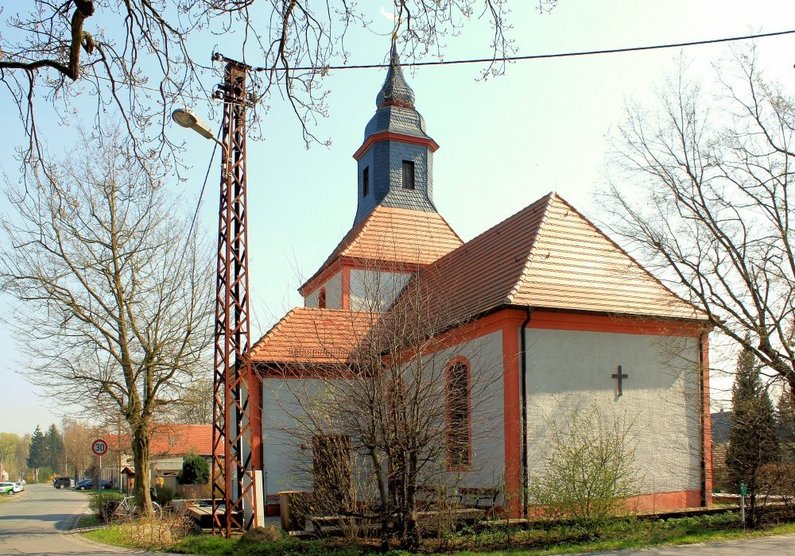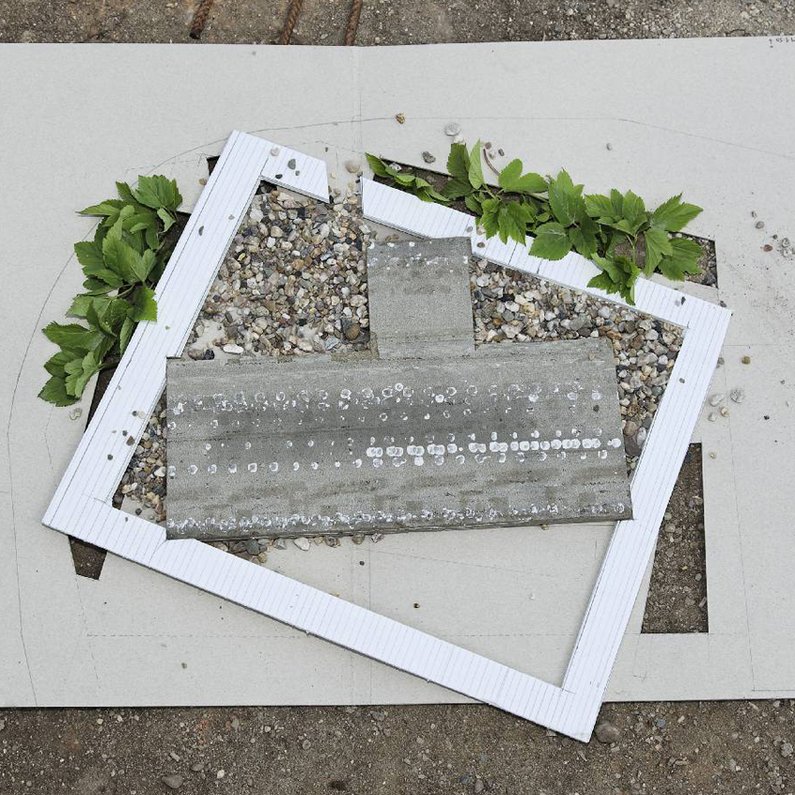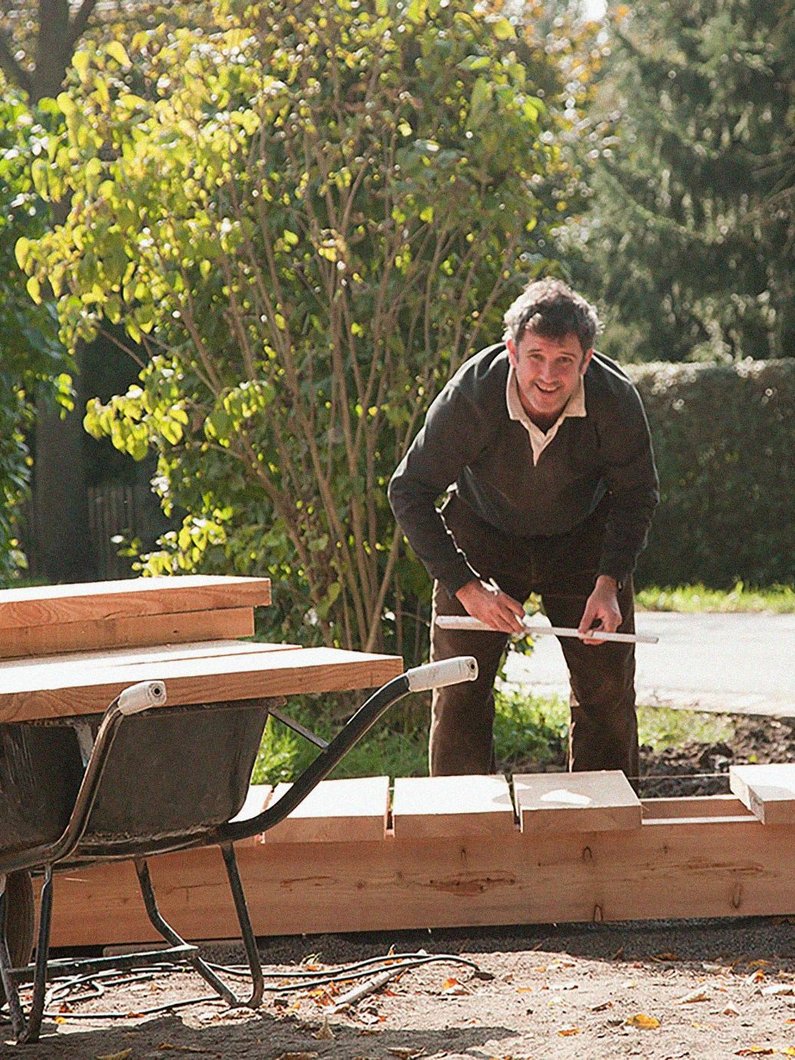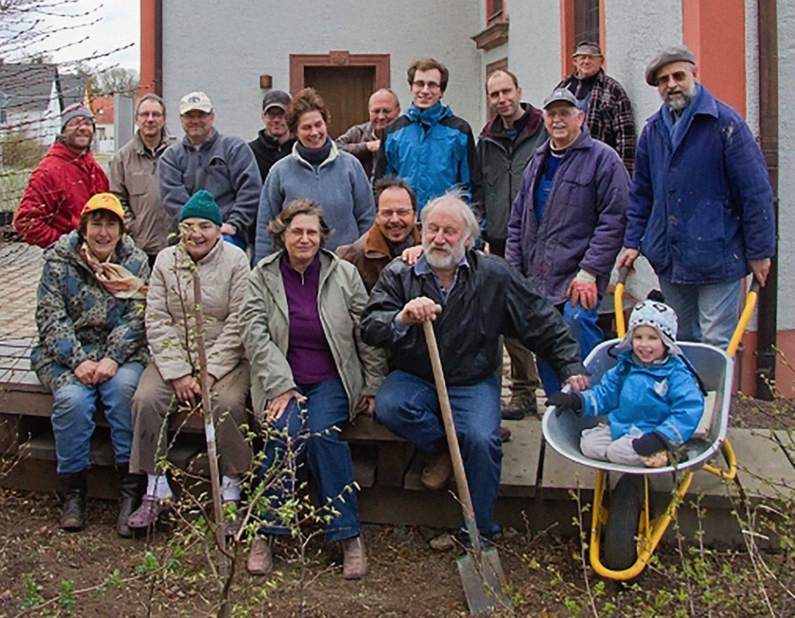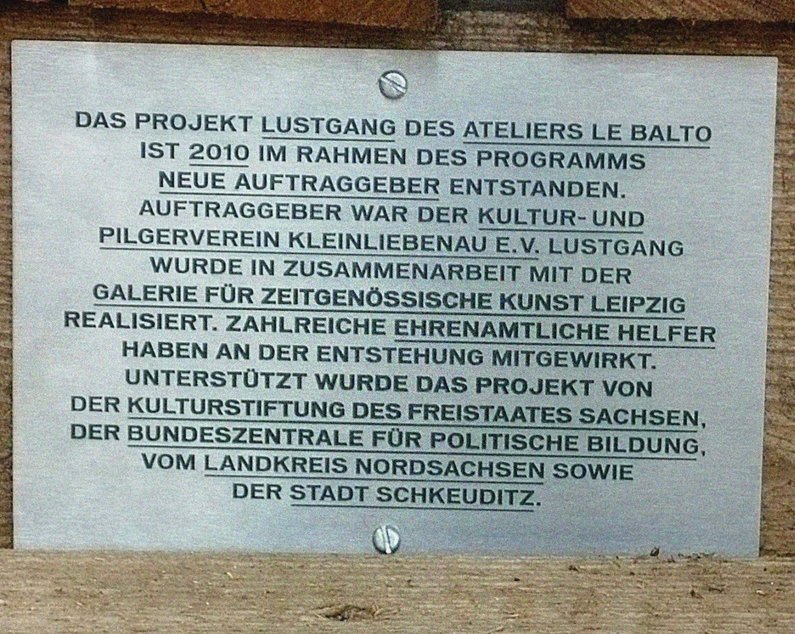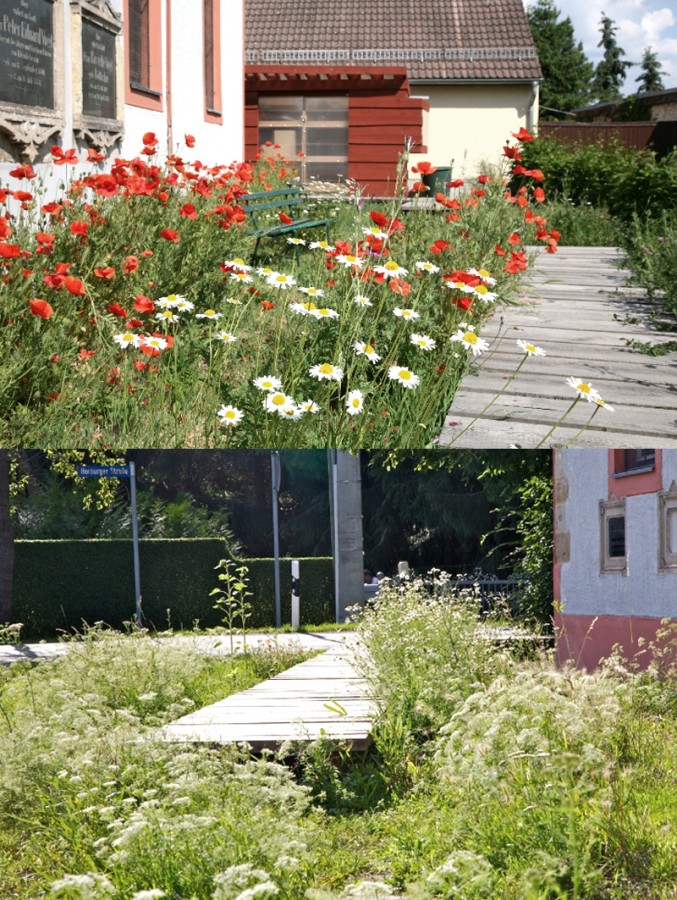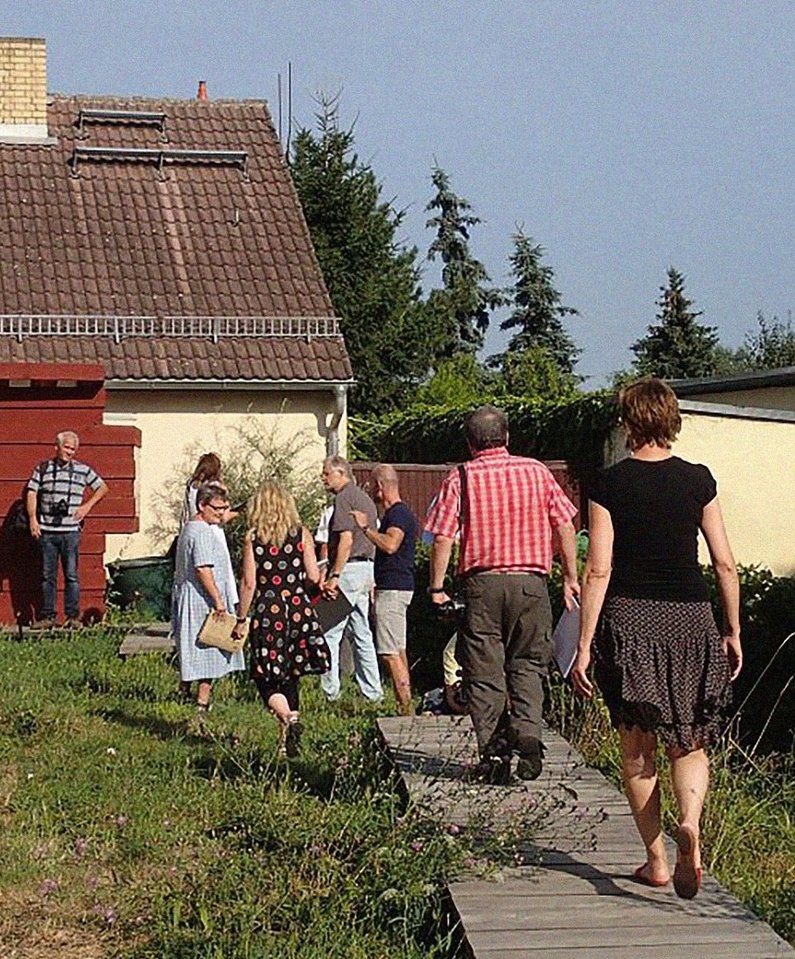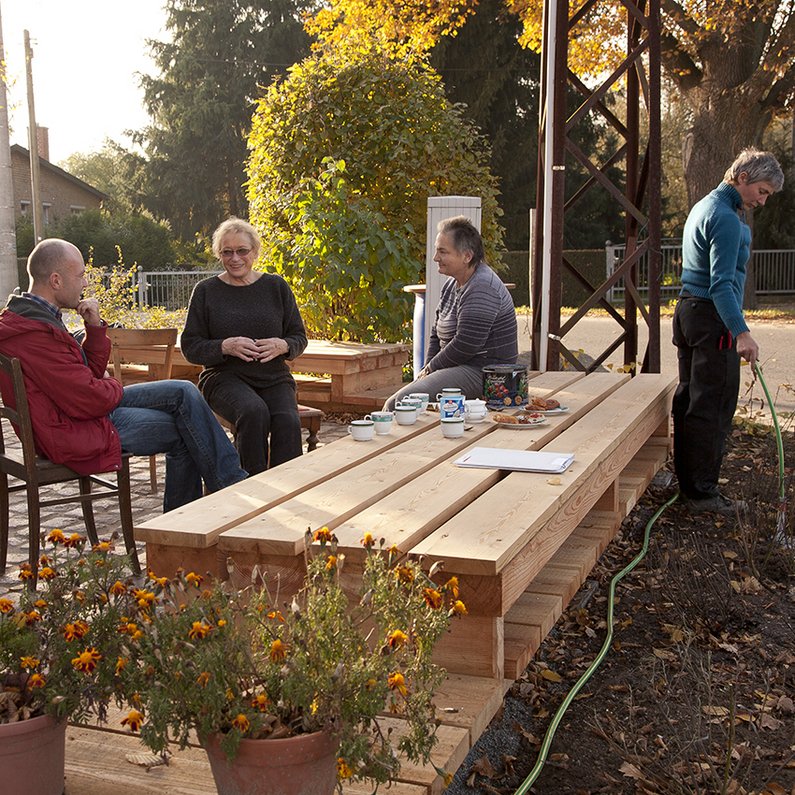Kleinliebenau is a borough of the city of Schkeuditz in the district of North Saxony. First mentioned in 1309, the church of the erstwhile knight’s estate in Kleinliebenau is a historic monument situated on the ancient Via Regia. In the Middle Ages, it offered shelter to merchants who traveled along the “royal highway.” The baroque interior, which has survived almost intact, dates from 1787. In 2005, the historic building was sold to the teacher Henrik Mroska for a symbolic price of €1. Established that same year, the Kultur- und Pilgerverein Kleinliebenau e.V. has made it its mission to restore and preserve the sacred site for future generations. Year after year, around fifty pilgrims stop in Kleinliebenau on their way to Santiago de Compostela in Spain. The idea originally floated by members of the association was to invite artists to implement creative alterations of the church, but the mediators proposed retaining the eighteenth-century interior and instead integrating the immediate surroundings of the church with the village center by making changes that would encourage new activities. They suggested contacting the landscape architecture studio LE BALTO in Berlin.
Atelier le balto’s project consists of a “pleasure walk” around the church. A raised wooden boardwalk leads visitors on a tour of the building’s surroundings and guides their eyes toward its unusual structural features as well as the scenery. A platform at the boardwalk’s northwestern end provides seating for concerts and other events. The path is flanked by hollows planted with willows, a nod to the characteristic roadside ditches in many parts of the village. The boardwalk and trees form a visual frame around the church that underscore the distinctive nature of the site. The “pleasure walk” is an idea with a centuries-old tradition in the art of landscape design, describing the enjoyable experience of strolling through a garden along paths carefully structured so as to stimulate the senses on various levels.
